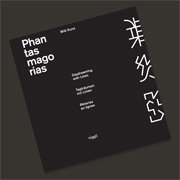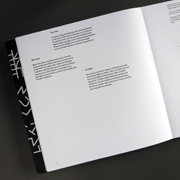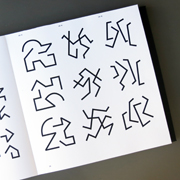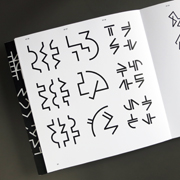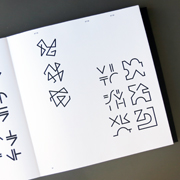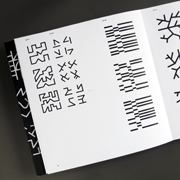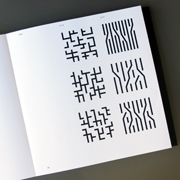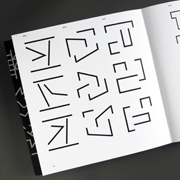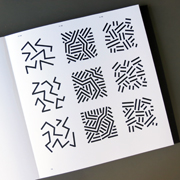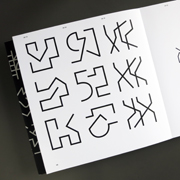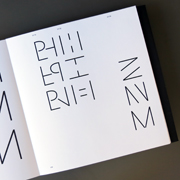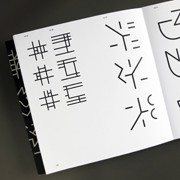Phantasmagorias
Daydreaming with Lines
In the summer of 2011, with neither preconception nor a specific goal, I began a series of pencil sketches. My plan was to create, over a thirty-minute period each day, three sketches using straight and curved lines. Created only for myself and guided by intuition, they would take form on paper, in three squares on pages of an A4 sketchbook.
Daily the sketches developed differently. Sometimes they would flow almost instantaneously from my hand, but on occasion their form would take shape only reluctantly. I worked by instinct, but was inspired by alphanumeric signs and symbols, as well as by geometric elements. By sketching rapidly, I tried to minimize analysis and thinking, so as not to interfere with creating. I simply wanted to bring my optical fantasies with a pencil to the paper.
Creating three sketches a day proved to be a bigger challenge than I had anticipated. Lack of time, motivation, and the inability to concentrate sometimes kept me from adhering to my plan. Ideas and concepts don’t always materialize on command.
Through sketching, a random thought would develop into a theme. Sometimes I sketched based on a vague idea. Often, however, the subject materialized during the work. By drawing a line, a form developed, leading to other forms turning into a composition. As the first book filled up with sketches, I was surprised by their diversity and richness.
The process encouraged a certain openness and looseness that invited further development and refinement. I decided to paint the pencil lines black with a three-millimeter flat brush, to increase the contrast of the forms against the white background and to emphasize their negative space.
In reviewing the brush drawings critically, I wanted to see how they looked when done on the computer. The line weight matching the brushstrokes would eliminate the irregularities of the drawings, but increase their graphic quality. But would the computer-generated lines make the drawings appear too polished and impersonal? After several tests, I found that the quality of the image in fact gained from the line’s consistent weight and crispness.
The drawings are without intended meaning. Often, the content of a composition is only a mix of angled and curved lines. Sometimes an optical theme continues over several pages, to be interrupted by a series of single ideas. All the drawings, however, are unified through my “handwriting.”
Pages: 120
Images: 800+
Text: English / German / French
Size: 7.875 x 8.25 x 0.625 in.
Paper: Munken Polar Rough 150 g/sqm
Printing: Black
Binding: Smyth sewn, soft cover, gatefold front and back
Published by Niggli, Switzerland
ISBN 978-3-7212-0964-8
Available online, at select bookstores, museum shops, and www.niggli.ch
